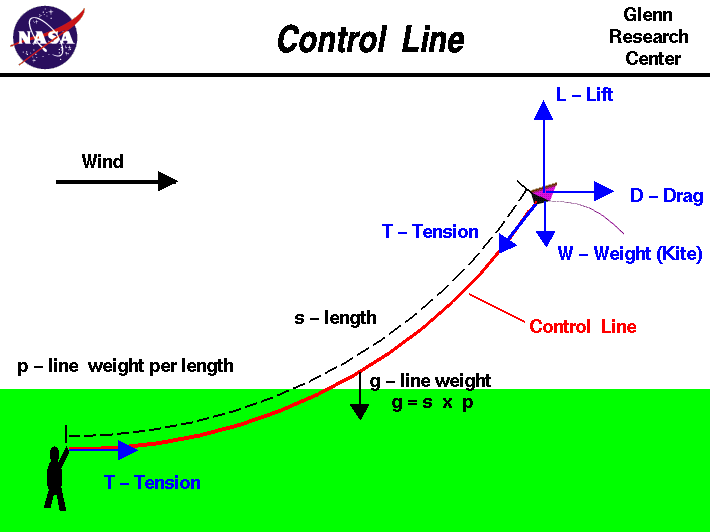
An excellent way for students to gain a feel for
aerodynamic forces
is to fly a
kite.
The motion of the kite through the air is the result of
forces
being applied to the kite. The kite responds to these forces according to
Newton's
laws of motion.
A kite is heavier than air and relies on the motion of the
wind past the kite to generate the aerodynamic
lift
necessary to overcome the
weight
of the kite.
The movement of the air past the kite also generates aerodynamic
drag
which is overcome by constraining the kite with a
control line.
The control line is attached to the kite
bridle
by a knot at the
bridle point.
In
flight,
the kite rotates about the bridle point due to the
torques
created by the forces. The action of the forces is
transmitted through the control line by tension in the line.
The flyer feels the pull of the tension at the other end of the line.
You will notice that the control line
produces a gentle curve from the hand of the flyer to the kite;
the line sags under its own weight.
Mathematical
equations
have been developed which describe the shape of
the control line.
The line has a certain length s and the weight of the
control line is evenly distributed along the length at p ounces
per foot of line. The total weight of the control line is designated
g and
g = s * p
Because the shape of the line is not a straight line we can not use
trigonometry
to determine the height at which the kite flies for a given length of line.
The mathematical equations describing the curve of the
control line are pretty messy! So we have written a computer
program to solve them for you.
You can use the
KiteModeler computer program to solve these equations
for a kite which you design.
You can then build your own kite from your design and compare the
flight performance to a computer prediction of the performance.
KiteModeler predicts the height at which your design flies based on
mathematical models of the lift, drag, weight, and control line conditions.
You can determine the
altitude at which your kite actually flies by using some simple math techniques and
some graph paper. With a little more mathematical
knowledge you can even calculate the altitude at
which the kite is actually flying.
Enjoy flying ... but always fly
safely.
Activities:
Guided Tours
Navigation ..


- Beginner's Guide Home Page
|
